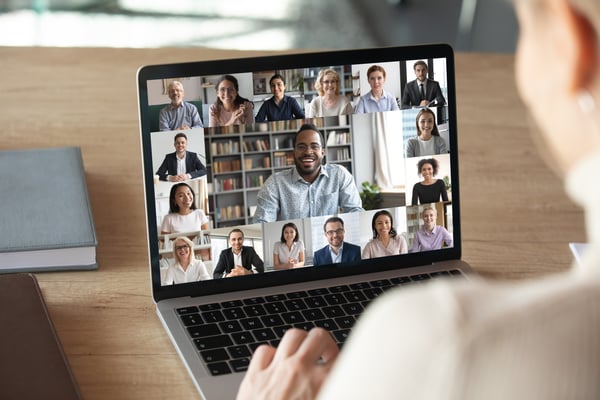 Most things have moved online this year. The annual or quarterly SKO is no different. Sales teams are used to seeing their colleagues in person for SKOs but many sales leaders are trying to figure out how to take this important meeting online.
Most things have moved online this year. The annual or quarterly SKO is no different. Sales teams are used to seeing their colleagues in person for SKOs but many sales leaders are trying to figure out how to take this important meeting online.
Having a successful online SKO is not so different from having a successful in-person SKO. In fact, the technology being used during remote work gives some distinct advantages for hosting an SKO. Below you will find the elements that make a successful SKO and tips on how to make it successful in an online/virtual format.
Any SKO should be approached in three phases. There is the preparatory phase. Then there is the actual SKO itself and, perhaps most importantly, there is the phase after the SKO. Post SKO is when new knowledge can actually turn into meaningful habits. We will explore each of these phases and discuss how to execute them for an online SKO.
You don’t have to plan for the usual logistics of hosting a team in-person however, there is still plenty to plan for. Any successful SKO or training engagement starts with the end in mind. Goal setting is important in normal SKOs and it is equally critical in any online or virtual SKO.
There are many different things related to product or skills that you want to train the sales team on. However, you have to narrow your focus in order to be successful. What is it exactly that you want the team to be better at after the SKO? Is that goal specific enough to be measured? What metrics will you use to track progress?
Of course, there is more to planning like what conferencing tools to use and when to pull sellers away from their normal activities. If you can answer the questions above however, you are in good shape for planning the SKO.
The learning and practice starts at this point of the SKO. This is where certain advantages of remote working start to aid the SKO. Typically, sellers are pulled off the field for a day or more. It’s expensive to pull sellers away from their normal activities so teams are forced to pack a lot into the limited time during the SKO. Since people are attending everything online, there is no need to cram the learning and events into one or two days.
The SKO events should be limited to 4 hours a day at a max and should be spread out over several days. This is also a much better learning approach. People don’t learn well when a lot of information is thrown at them at once. If it’s spread out however, it gives sales people a chance to digest everything they are learning.
Another mistake to avoid is packing the SKO with “webinar” type of activities. It may be tempting to resort to long presentations but without an active crowd around you, it is hard to stay engaged. Therefore, the activities planned during the SKO should be oriented towards engagement rather than sitting and listening. Take advantage of conferencing tools and split people into smaller breakout groups. Sharing and discussing with colleagues is a highly effective way to retain knowledge.
This is perhaps the most ignored phase of an SKO and it is arguably the most important. After the SKO is when sellers start applying what they have learned and develop habits. Companies spend a lot of time and money on skills and product training. All of that investment goes nowhere if the trainees don’t establish new habits.
After the SKO is when leaders and enablement professionals need to proactive about making sure sellers are using and practicing the things discussed during the SKO. That means carving out time to practice and revisit what was learned during the SKO.
Just like the SKO itself, the reinforcement phase should encourage sellers to practice with their existing accounts and opportunities. Using new skills in context is the most effective way to establish new habits in adults.
There is no reason that this year’s SKO has to be any bit less than other years. The conferencing and remote tools offices already use provide distinct advantages like easy break out groups. The tools and the fact that most people are working remotely means you are able to spread out the learning. This makes it easier to achieve habit change.
Sales leaders should not try to replicate the “in-person SKO” in a virtual medium. Instead, they should recognize the distinct advantages provided by the circumstances and use them to have even better and more effective SKOs.

Jill Ulvestad is the founder of Funnel Clarity. Jill applies her expertise in driving sales performance and results, developing sales strategy and streamlining skills development to the Funnel Clarity team. With nearly 20 years of business development and consulting experience, Jill provides valued sales performance insight to her roles as co-founder and managing partner of Funnel Clarity. Previously, Jill spent 8 years with the sales performance firm Huthwaite where she served as the Vice President of Sales. She most recently was co-founder of Business Performance Partners, a sales and strategy consulting firm and led the coaching practice.